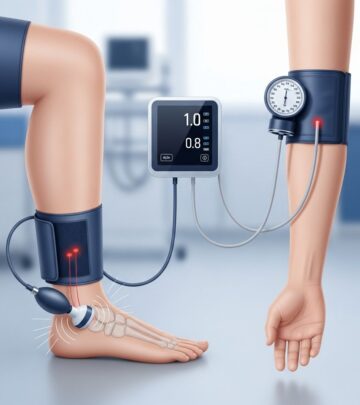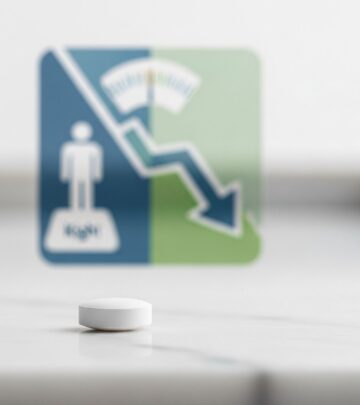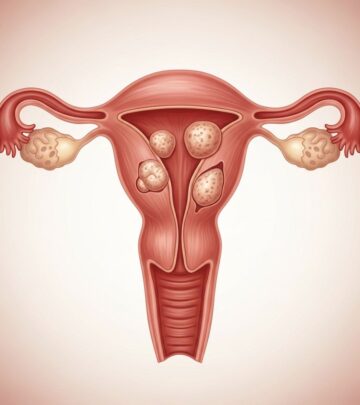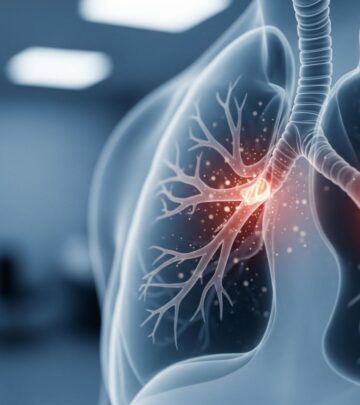Sprains: Symptoms, Causes, and What You Need to Know
Comprehensive overview of sprain symptoms, primary causes, treatment, and prevention strategies for joint injuries.

A sprain is a common type of injury affecting the ligaments, the strong bands of tissue that connect two bones across a joint. Although most often occurring in the ankle, sprains can affect any joint in the body. Prompt recognition and treatment are essential for optimal recovery and prevention of complications. This guide provides a comprehensive overview covering symptoms, causes, diagnosis, treatment, complications, prevention, and frequently asked questions about sprains.
Overview
Sprains are injuries that involve stretching or tearing of one or more ligaments — the tough, fibrous tissues that stabilize joints by connecting bones together. The most frequently affected joint is the ankle, though wrists, knees, and thumbs are also common sites. Sprains range from mild (overstretching of ligaments) to severe (complete ligament tears).
Initial treatment for most sprains consists of rest, ice, compression, and elevation (the RICE method). While less severe sprains often heal at home, more serious cases may require medical evaluation or even surgery. Early intervention and appropriate care are essential for returning the joint to full function and minimizing lasting issues.
Sprain vs. Strain: What’s the Difference?
| Sprain | Strain |
|---|---|
| Injury to ligaments (connect bones to bones) | Injury to muscles or tendons (connect muscles to bones) |
| Often caused by sudden twisting or impact on joints | Usually results from overstretching or overusing a muscle |
Symptoms of a Sprain
The signs and symptoms of a sprain can differ based on the severity of ligament injury and the affected joint. Typical symptoms include:
- Pain at or around the joint, especially with use or movement
- Swelling developing rapidly or over several hours
- Bruising or discoloration around the affected area
- Limited ability to move the joint or reduced range of motion
- A popping sensation or sound at the time of injury
For instance, in an ankle sprain, swelling and bruising are almost always present, and walking or putting weight on the joint may be difficult or impossible.
Severity of Symptoms
- Mild (Grade I): Minor stretching, mild pain, and swelling, little loss of function.
- Moderate (Grade II): Partial tear with moderate pain, swelling, bruising, and limited movement.
- Severe (Grade III): Complete ligament tear — severe pain, instability, inability to use or bear weight on the joint.
When to See a Doctor
While many sprains are manageable at home, seek medical attention if you:
- Cannot move or put weight on the joint due to severe pain
- Have pain directly over bones of the joint (may indicate a fracture)
- Experience numbness in any part of the injured area
- Notice significant deformity or instability in the joint
Causes of Sprains
Sprains typically happen when a joint is forced beyond its normal range of motion, overstressing or tearing the ligaments. Common mechanisms include:
- Falling and landing awkwardly on a limb
- Sudden twists or pivots during sports or physical activities
- Trauma or impact accidents (sports, walking on uneven surfaces)
- Accidents involving slipping, tripping, or collisions
Most ankle sprains occur when the foot unexpectedly rolls inward, stretching the ligaments on the outside of the ankle. Similarly, sprains in the knee, wrist, or thumb each have typical injury mechanisms (landing from a jump, bracing a fall, etc.).
Risk Factors
The risk of sustaining a sprain rises in situations or people with:
- Poor conditioning — weak muscles offer less joint support
- Fatigued muscles — tired muscles are less likely to protect joints
- Improper or ill-fitting footwear
- Uneven or hazardous surfaces, including playing fields or icy sidewalks
- Previous joint injuries — prior sprain increases susceptibility to repeat injury
- Sports requiring jumping, pivoting, sudden starts/stops (basketball, soccer, tennis)
Complications
Although many sprains heal completely, complications can include:
- Chronic joint pain and swelling
- Ongoing instability or repeated sprains
- Arthritis — increased risk in the affected joint if ligaments don’t heal properly
- Limited range of motion, muscle weakness, or joint stiffness, especially after severe injuries or inadequate rehabilitation
Prevention
To reduce your risk of experiencing a sprain, consider these precautionary steps:
- Warm up properly before all physical activities and sports
- Perform exercises to build muscle strength and balance, especially around vulnerable joints
- Use proper techniques and protective gear during activities
- Wear appropriate, supportive footwear — avoid high heels or worn shoes
- Be alert to uneven terrain and obstacles
- Do not continue activities when fatigued, as tired muscles provide less support
Diagnosis of Sprains
Diagnosing a sprain begins with a detailed physical exam. The healthcare provider assesses:
- Location of tenderness or swelling
- Range of motion and joint stability
- Pain on movement or touch
If there’s concern for a fracture or significant ligament injury, further tests may include:
- X-rays — to rule out broken bones
- MRI (magnetic resonance imaging) — especially with severe pain or instability, to evaluate the ligament injury’s extent
Treatment of Sprains
The main goal of sprain treatment is to promote healing, restore joint function, and prevent long-term instability. Most sprains heal with self-care and a gradual return to activity, following the R.I.C.E. method:
R.I.C.E. Approach
- Rest: Avoid activities causing pain, swelling, or discomfort. Use crutches or splints if necessary to keep weight off the joint but begin gentle activity as soon as possible to avoid stiffness
- Ice: Apply ice packs or a bath of ice and water for 15 to 20 minutes, several times a day (never more than 20 minutes at a time), for up to 48 hours or until swelling improves. Always use a barrier between ice and skin
- Compression: Use elastic bandages or wraps to help control swelling. Make sure not to wrap too tightly; loosen if numbness, color changes, or pain develops below the bandage
- Elevation: Raise the injured joint above heart level as much as possible, especially at night, to minimize swelling
Pain Management
- Over-the-counter medications like ibuprofen (Advil, Motrin IB) or acetaminophen (Tylenol) may help relieve pain and reduce inflammation
Gradual Use and Rehabilitation
After the acute phase (first 48-72 hours), gentle use and mobility exercises are encouraged as pain and swelling subside. Physical therapy may be recommended to:
- Restore joint strength and stability
- Improve flexibility
- Prevent recurrent injuries
Immobilization and Surgery
- Braces or splints may be prescribed for moderate to severe sprains to immobilize the joint and promote healing
- Surgical intervention is rarely needed but may be considered for complete ligament tears or when nonsurgical treatment fails to restore joint stability
Recovery and Prognosis
Healing times vary with the sprain’s severity:
- Mild: days to weeks
- Moderate: several weeks
- Severe: several weeks to months
Gently begin to use the injured area as pain and swelling begin to improve. Most people see a gradual, progressive improvement. Delayed treatment or aggressive return to activity can lead to complications, such as chronic pain or joint weakness. Following medical advice and rehabilitation protocols is critical for optimal recovery.
Tips for a Smooth Recovery
- Follow all home care instructions diligently
- Gradually increase joint activity as pain allows
- Attend all recommended physical therapy or follow-up appointments
Frequently Asked Questions (FAQs)
Q: How can I tell if my injury is a sprain or a fracture?
A: Sprains usually cause pain, swelling, and sometimes bruising around a joint, but you can still move the joint with limited range. In contrast, fractures often result in severe pain directly over a bone, significant swelling, possible deformity, and inability to move or bear weight. Always seek medical assessment if in doubt.
Q: Is it okay to walk on a sprained ankle?
A: For mild sprains, gentle weight-bearing may be possible as symptoms improve. For moderate or severe sprains, it’s best to keep weight off the joint until pain and swelling subside and your healthcare provider gives clearance.
Q: What if I keep getting sprains in the same joint?
A: Repeated sprains may indicate chronic joint instability or improper healing. Physical therapy, proper footwear, and joint supports may help. Severe or repeated sprains may need specialist assessment.
Q: Can sprains cause long-term problems?
A: Yes, especially with improper treatment. Chronic pain, joint instability, and arthritis are possible complications. Rehabilitation is important to restore normal joint function.
Q: How can I speed up my recovery?
A: Following the RICE method, taking prescribed medications, and adhering to gradual rehabilitation routines are key to faster, more complete recovery. Avoid returning to sports or strenuous activity too soon.
Conclusion
Sprains are frequent joint injuries that may range from mild to severe. By understanding their symptoms, causes, prevention, and correct management, you can enhance your chances of a full recovery and minimize the risk of lasting complications. When in doubt about your injury, consult a healthcare provider for an accurate diagnosis and appropriate treatment.
Read full bio of Sneha Tete












